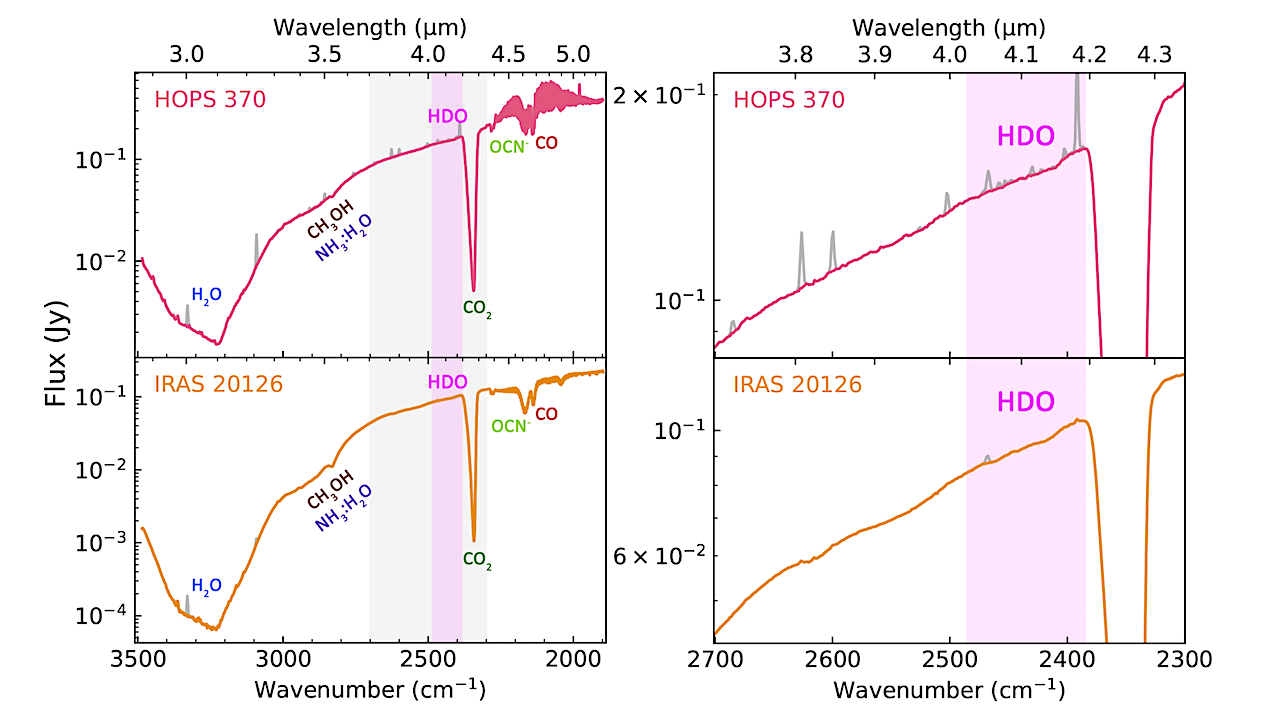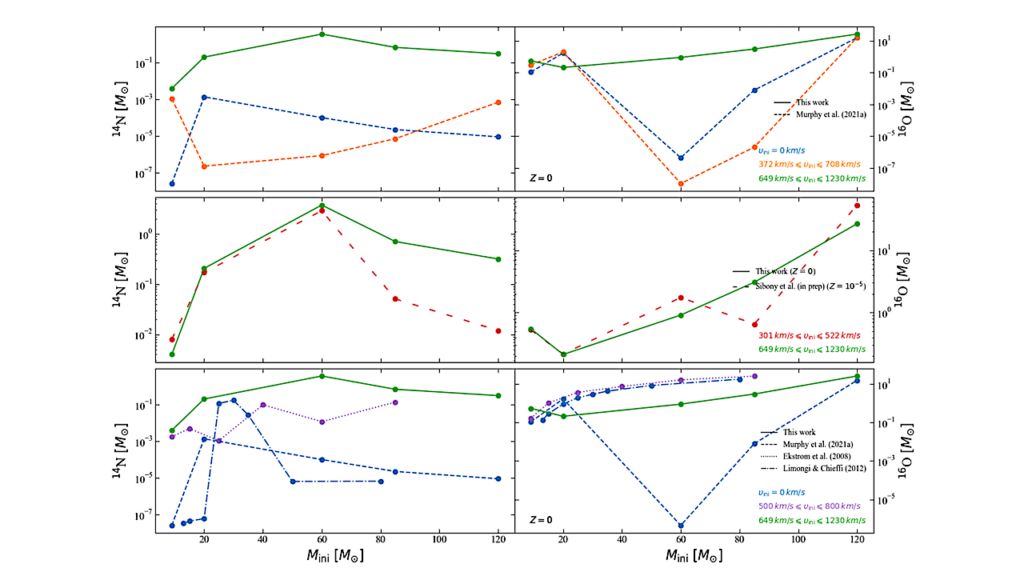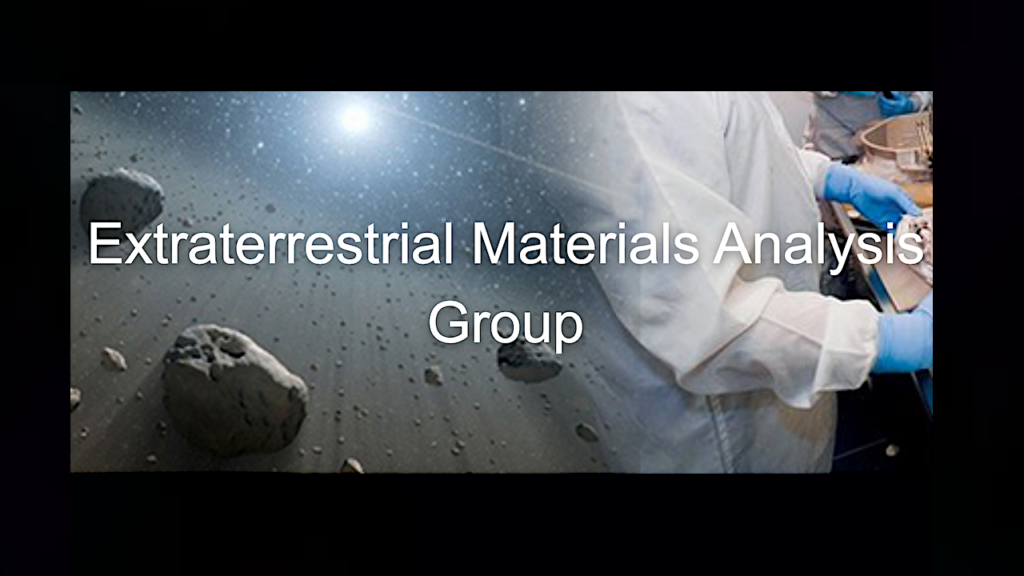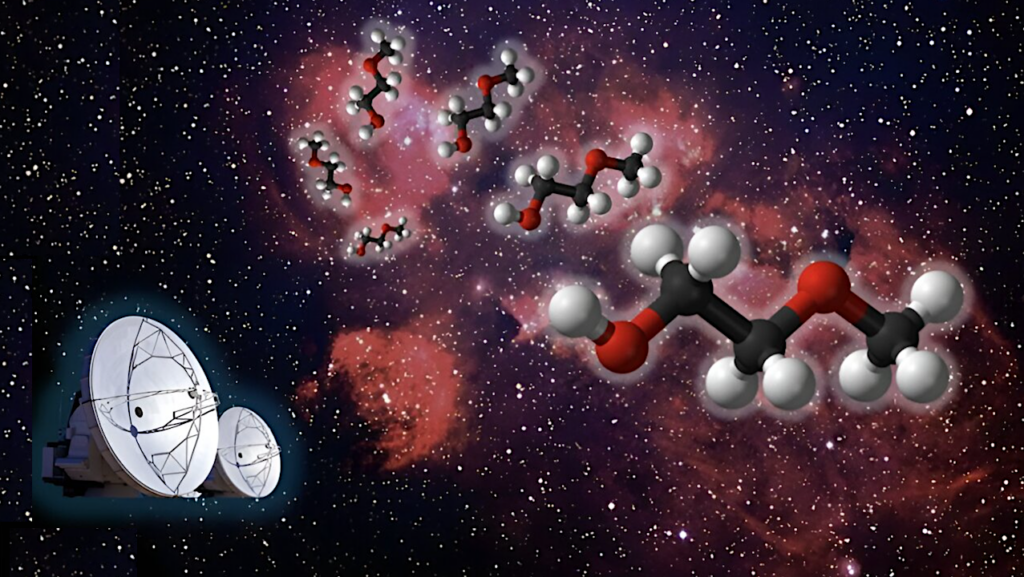JWST Detections Of Amorphous And Crystalline HDO Ice Toward Massive Protostars

This work aims to utilize the increased sensitivity and resolution of the JWST to quantify the HDO/H2O ratio in ices toward young stellar objects (YSOs) and to determine if the HDO/H2O ratios measured in the gas phase toward massive YSOs (MYSOs) are representative of the ratios in their ice envelopes.
Two protostars observed in the Investigating Protostellar Accretion (IPA) program using JWST NIRSpec were analyzed: HOPS 370, an intermediate-mass YSO (IMYSO), and IRAS 20126+4104, a MYSO. The HDO ice toward these sources was detected above the 3σ level and quantified via its 4.1 μm band.
The contributions from the CH3OH combination modes to the observed optical depth in this spectral region were constrained via the CH3OH 3.53 μm band to ensure that the integrated optical depth of the HDO feature was not overestimated. H2O ice was quantified via its 3 μm band. From these fits, ice HDO/H2O abundance ratios of 4.6±1.8×10−3 and 2.6±1.2×10−3 are obtained for HOPS 370 and IRAS 20126+4104, respectively.
The simultaneous detections of both crystalline HDO and crystalline H2O corroborate the assignment of the observed feature at 4.1 μm to HDO ice. The ice HDO/H2O ratios are similar to the highest reported gas HDO/H2O ratios measured toward MYSOs as well as the hot inner regions of isolated low-mass protostars, suggesting that at least some of the gas HDO/H2O ratios measured toward massive hot cores are representative of the HDO/H2O ratios in ices.
The need for an H2O-rich CH3OH component in the CH3OH ice analysis supports recent experimental and observational results that indicate that some CH3OH ice may form prior to the CO freeze-out stage in H2O-rich ice layers.

Comparison of HDO/H2O ratios measured in the gas and ice toward protostars of various masses (adapted from Jensen et al. 2019 and Andreu et al. 2023). Ratios measured in the gas phase are plotted with red diamonds for clustered Class 0 LYSOs, yellow squares for isolated Class 0 LYSOs, blue stars for isolated Class 1 LYSOs, and green pentagons for MYSOs. Ice upper limits derived from pre-JWST spectra are plotted with teal triangles. The JWST ice values from this work are plotted with orange hexagons. The literature values used in this figure are provided in Table D.1. — astro-ph.SR
Comments: Accepted for publication in A&A. 23 pages, 17 figures, 10 tables
Subjects: Solar and Stellar Astrophysics (astro-ph.SR); Astrophysics of Galaxies (astro-ph.GA)
Cite as: arXiv:2404.15399 [astro-ph.SR] (or arXiv:2404.15399v1 [astro-ph.SR] for this version)
Submission history
From: Katerina Slavicinska
[v1] Tue, 23 Apr 2024 18:00:00 UTC (13,629 KB)
https://arxiv.org/abs/2404.15399
Astrobiology, Astrochemistry,








